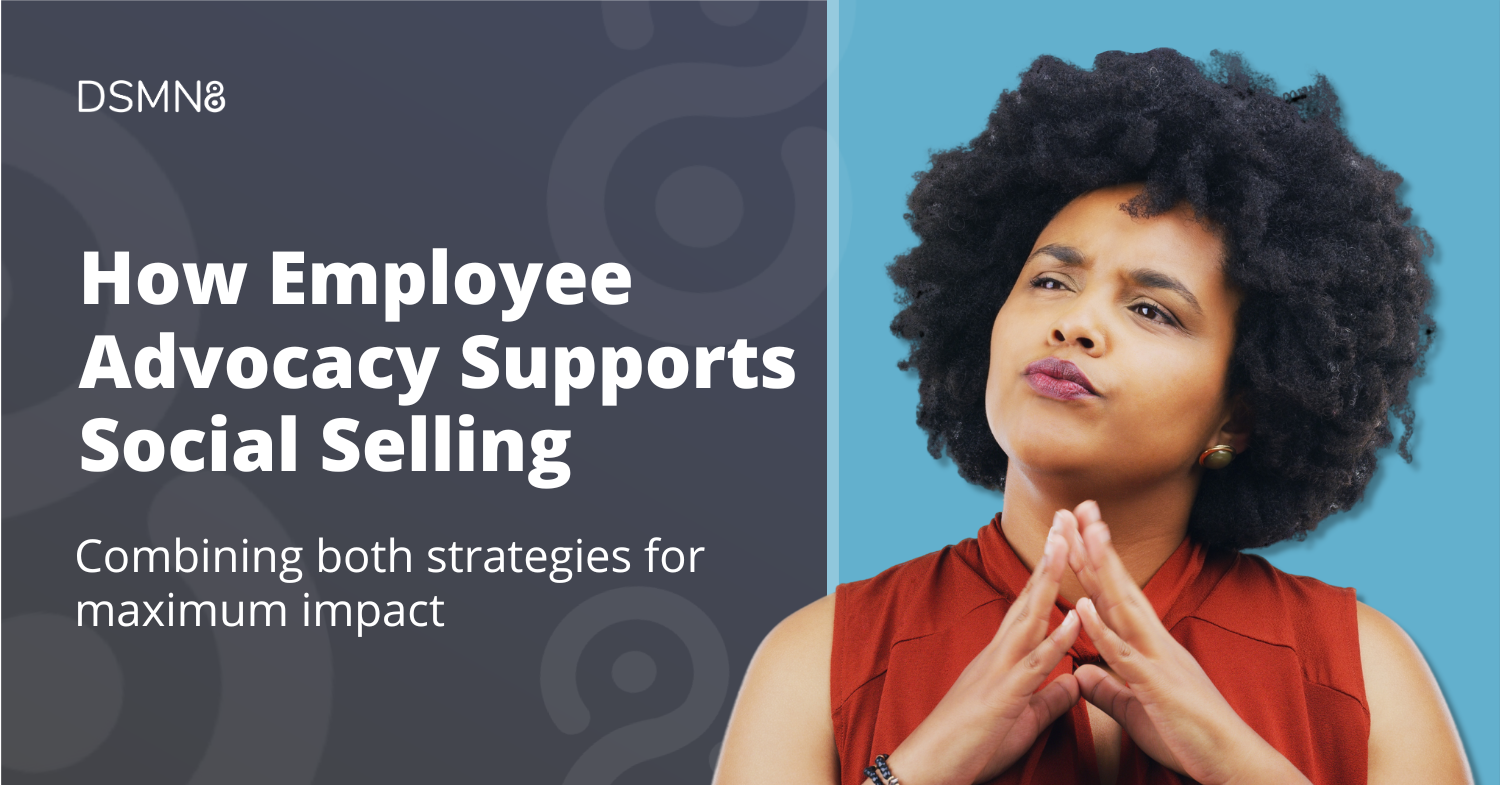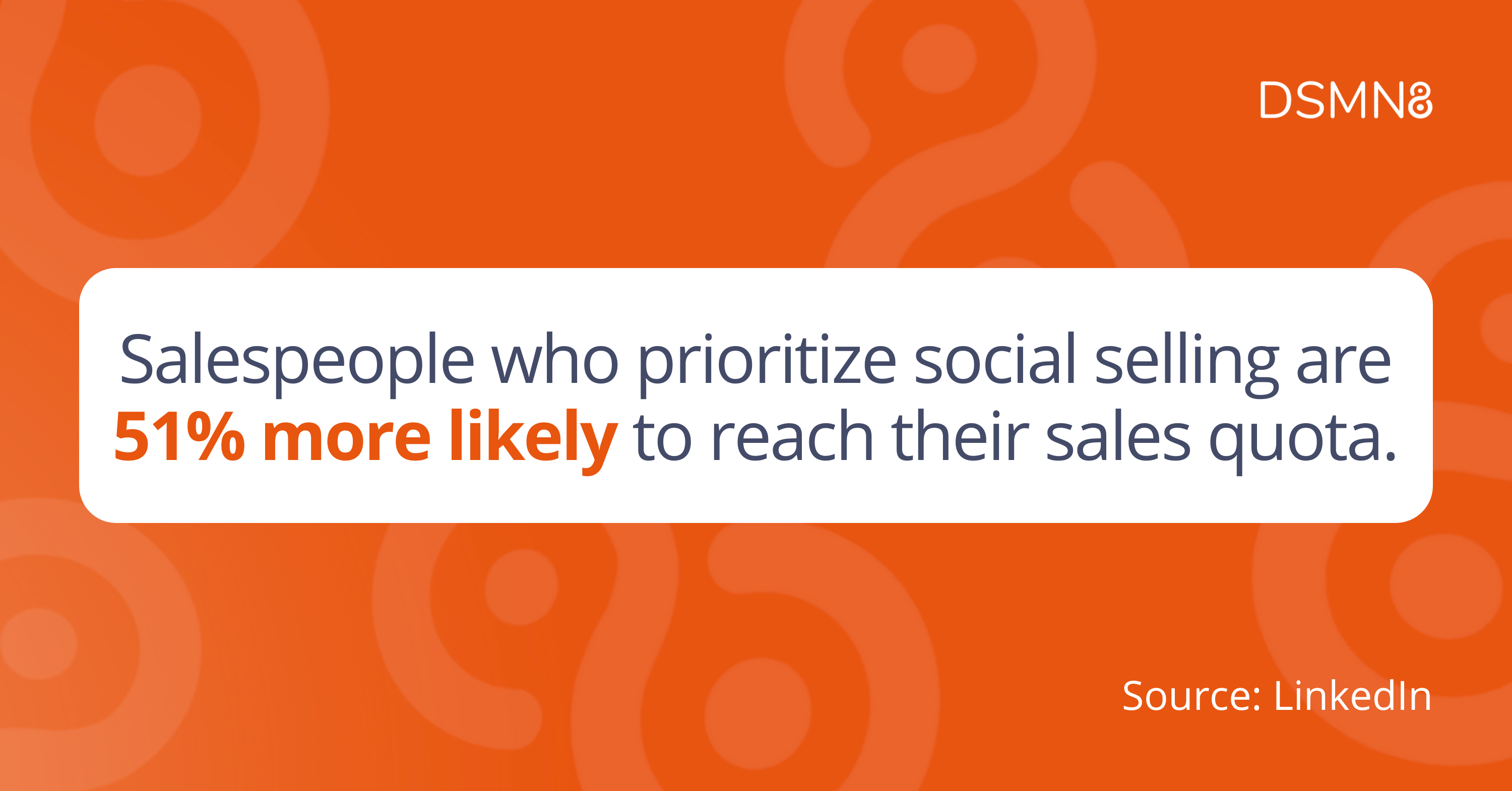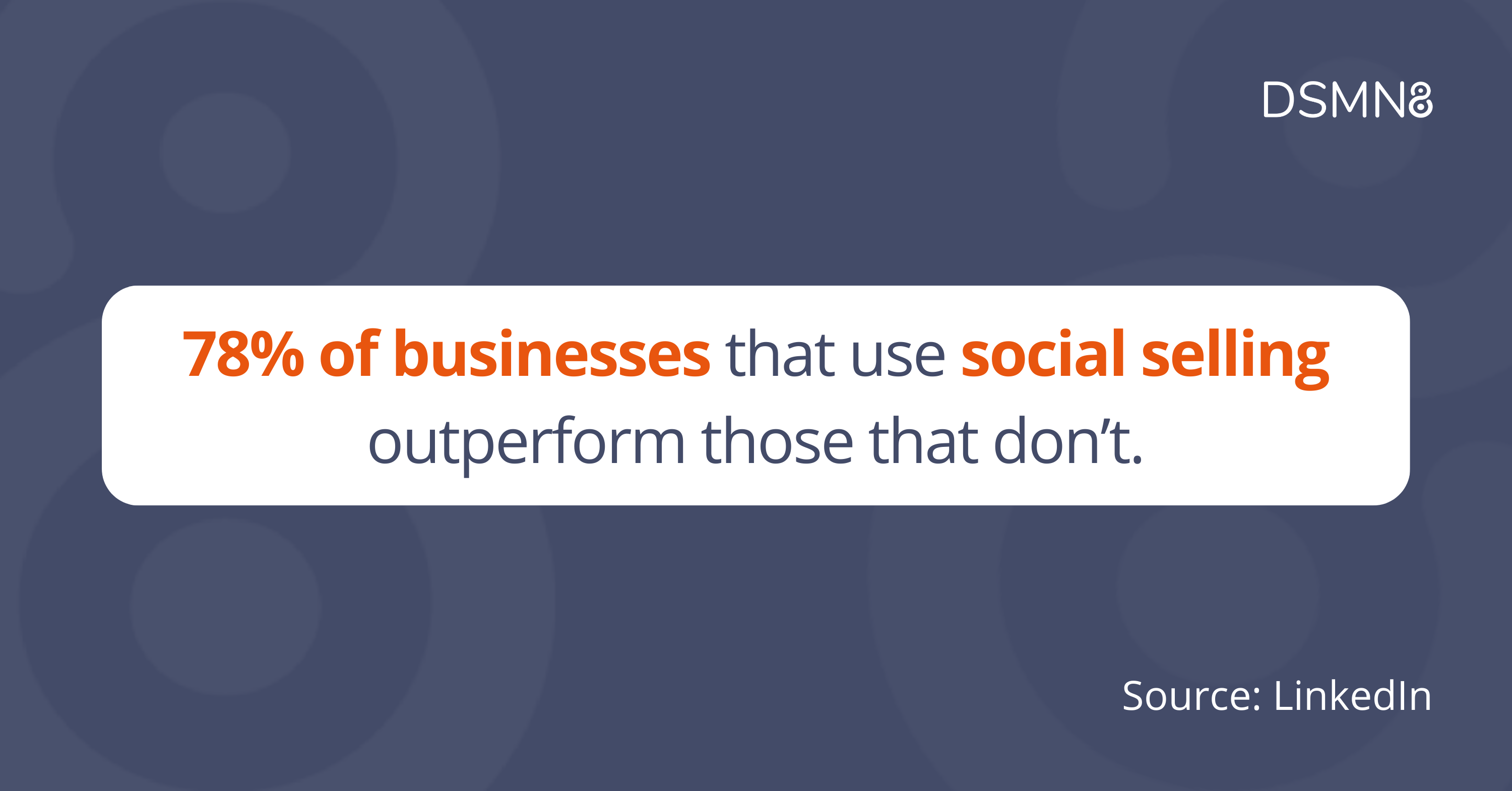
What is social selling, and how does employee advocacy support it?
Both of these marketing and sales strategies have emerged in recent years with the rise of professional social media, particularly LinkedIn.
I’ll break down what exactly they mean, how they differ, and most importantly, how you can build a strategy that encompasses both social selling and employee advocacy for maximum results.
What is Social Selling?
So, what exactly is social selling?
To put it simply, social selling is sales on social media.
That’s a very basic definition.
Social selling as a strategy involves salespeople building their social media presence, through personal branding and thought leadership, to position themselves as industry experts.

Why would a salesperson want to do this?
- To become the front-of-mind person when someone in their network is looking for a specific problem to solve.
- To spend less time on lead generation by cutting out cold emails and cold calls.
- To nurture prospects in a less invasive way than sending follow-up emails.
Plus, according to LinkedIn, salespeople who excel at social selling are 51% more likely to hit their quota. It makes their job easier.
What does social selling involve?
Social sellers are active on social media (primarily LinkedIn, especially in the B2B sector), sharing content and starting conversations.
This activity results in increased visibility (and therefore opportunities), and a way to nurture prospects in their pipeline, by providing value via their content.

Why social selling is the best strategy for the B2B sector
78% of businesses that use social selling outperform those that don’t.
Why?
Sales is all about building relationships, especially in the B2B space.
Social selling empowers your salespeople to present themselves as credible sources, and become trusted influencers in your industry.
And their target audience is on social media every day. In fact, as many as 50% of B2B buyers are actively looking for a solution on LinkedIn.
If your salespeople aren’t showing up, your competitors are.
What is Employee Advocacy?
Employee advocacy is a strategy for getting employees to share company content on social media.
Typically, this initiative is set up as a ‘program’, where specific employees, departments, or even the entire organization are invited to participate.
These programs often use an employee advocacy platform to make the process easy for those managing the program and participating employees. The platform will provide a place for advocates to find company-approved content, and even automate sharing it on social media.
Bradley explains the concept in this short video:
The Difference Between Social Selling and Employee Advocacy
While similar in the sense that they both involve employees sharing content on social media, employee advocacy and social selling are not the same thing.
As outlined above, social selling is a strategy for salespeople to build their presence in order to specifically help them do their job. The goals from this activity will be lead generation, booking meetings and making sales.
On the other hand, employee advocacy goes beyond just the sales team.
Employee advocacy is often a company-wide initiative, aiming to get employees in many departments creating and sharing content.
The goals of an employee advocacy program are more diverse too:
- Marketing want to increase brand awareness, generate more engagement on social media, while relying less on paid advertising.
- Talent and Employer Branding teams are seeking a cost-effective way to attract top talent to join your organization.
- HR could be embarking on a campaign to increase employee engagement, with the intent to improve employee retention.
Why Social Selling and Employee Advocacy Work Together
So which strategy is right for your organization?
Both!
Combining these two initiatives will generate the best possible results from employee social media.
Due to the benefits they’ll see from social selling, your sales team will have the most vested interest in joining an advocacy program.
Being able to find ready-to-share content approved by your company reduces any risk of saying the wrong thing, and saves time for your busy salespeople.
Getting employees from other departments and your leadership team involved will build brand trust further. While social sales may be your priority, keep in mind that you’ll see benefits for marketing, employer branding and recruitment too.
How Marketers Can Support Social Sellers
The biggest way marketers can support social sellers is by providing content for them to share.
Combining the expertise of your marketing and sales team, and ensuring they’re aligned on the strategy is key for success.
Think about it:
Your salespeople understand the pain points faced by prospects, and how your product/service solves their problem. They also know the questions they get asked most often.
And your marketers know how to create great social content that increases visibility and generates engagement.
When content brainstorms between sales and marketing take place, magic happens!
The other main way that marketing can support both social sellers and employee advocates is by providing training and resources.
Here are some great places to start:
- Your social media manager could create a simple guide or host a training workshop on best practices for creating content.
- Marketing can help sales optimize their LinkedIn profiles.
- Create clear brand guidelines and a social media policy to ensure everyone knows what’s okay and what isn’t. This also helps to alleviate the fear that some employees have when posting on social!
- Create a feedback loop. This gives sales the opportunity to share their ideas and lets marketing understand which content resonates with prospects the most.
The Content You Need for Social Selling
At this point, you’re probably thinking:
“Ok, but what content do salespeople need for social selling?”
Consider who will be connected with or following someone in your sales team.
They may have recently come across the type of solution you offer. These people are at the very top of the funnel, they’re not sure if they need the product/service you offer, but are interested in learning more.
Educational content, especially third-party content, will help your salesperson be helpful to this person. You’re not looking to push your brand at this stage, but instead, offer value.
Contrast this with someone who knows a lot about your industry, and is actively comparing solutions.
That individual will be interested in finding out about specific product features or benefits, and how your company is different from the competition. Social proof such as case studies, awards, and testimonials can make a huge difference here.
Your salespeople need content for each stage of the journey, as their followers will all be at different stages of the buying journey, and therefore interested in different content.
Finally, consistency is essential. A sales cycle can be as long as 12 months, and your salespeople will be looking to fill their pipeline as well as move buyers further along. Repurposing evergreen content you’ve already created to reach a new audience is the most efficient way to do this.
Additional Resources
Ready to get started with employee advocacy?
Schedule a call with one of the team.
Prefer to cut to the chase and explore the platform?
Roger that!
Book a demo of DSMN8, the #1 Employee Advocacy Platform.
Emily Neal
SEO and Content Specialist at DSMN8. Emily has 10 years experience blogging, and is a pro at Pinterest Marketing, reaching 1 million monthly views. She’s all about empowering employees to grow their personal brands and become influencers.




